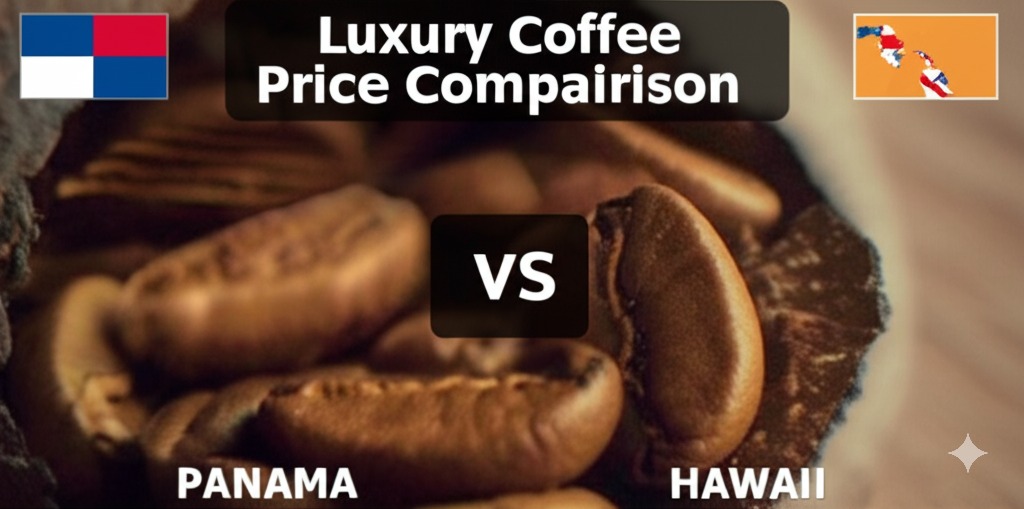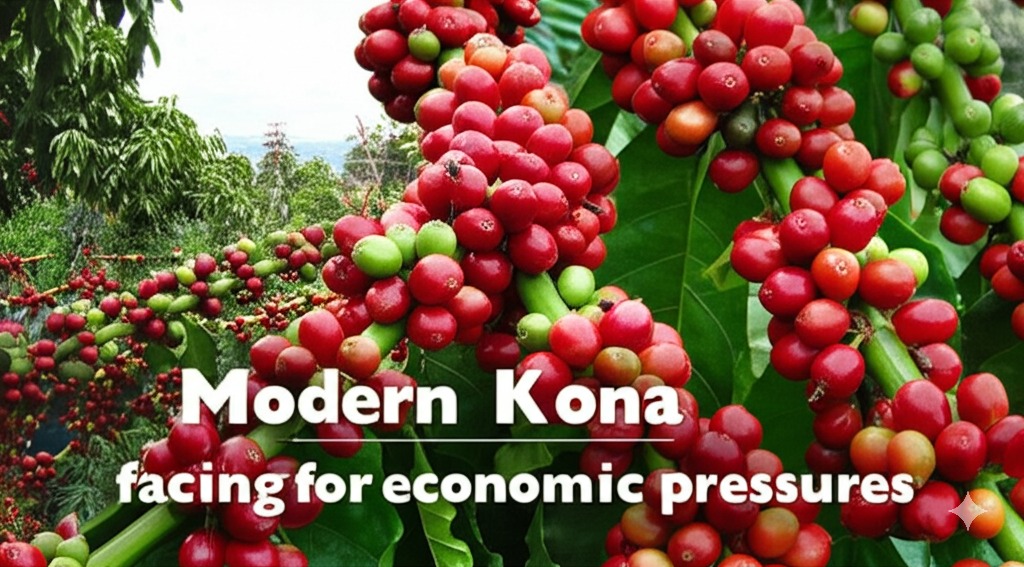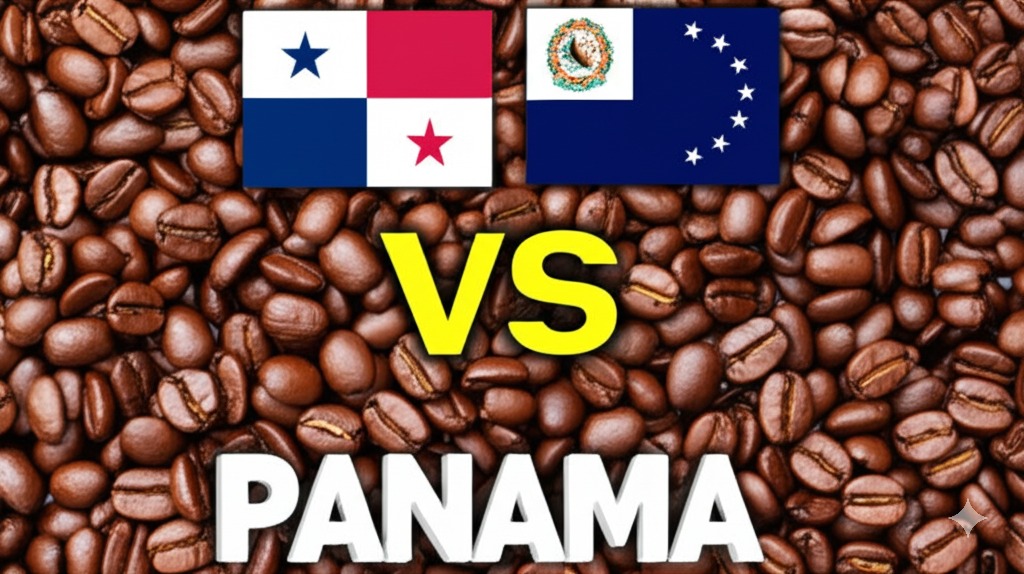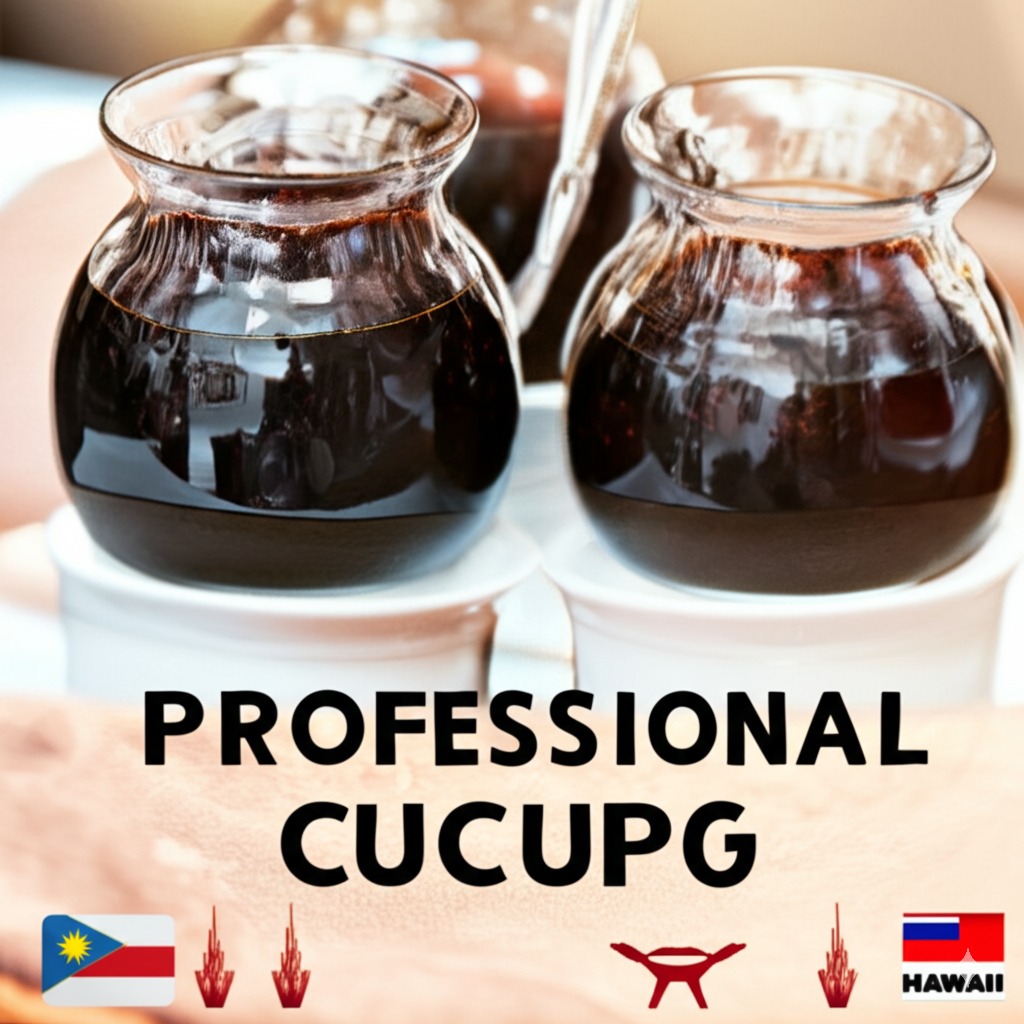Akankah Panama Coffee mengalahkan Hawaii Coffee pada tahun 2025?
Penikmat kopi menghadapi dilema saat memilih antara asal premium. Dengan kopi Panama dan Hawaii yang memerintahkan harga tertinggi, banyak yang bertanya -tanya yang menawarkan nilai lebih baik dan jika tren pasar saat ini akan berlanjut hingga 2025.
Panama Coffee kemungkinan akan mempertahankan keunggulan kompetitifnya di atas Hawaii Coffee pada tahun 2025 karena infrastruktur lelang yang mapan, beragam mikrolot, dan biaya produksi yang jauh lebih rendah. Sementara kopi Hawaii akan mempertahankan daya tarik mewahnya, varietas geisha Panama akan terus menetapkan catatan harga dunia dan mendapatkan pengakuan global.

Sebagai seseorang yang melacak pasar kopi premium selama bertahun -tahun, saya telah menyaksikan kebangkitan dramatis Panama Geisha dan kehadiran Kona Hawaii yang stabil. Keduanya merupakan harga premium, tetapi untuk alasan yang berbeda. Melihat ke depan ke tahun 2025, beberapa faktor akan menentukan asal mana yang mendominasi segmen kopi ultra-premium. Biarkan saya memecah apa yang bisa diharapkan oleh para profesional dan penggemar kopi.
Bagaimana posisi pasar Panama Coffee berubah pada tahun 2025?
Panama Coffee menghadapi kompetisi yang meningkat dari asal -usul khusus yang muncul. Banyak yang bertanya -tanya apakah lintasan harganya yang luar biasa dapat berlanjut atau apakah gelembung Geisha Panama akhirnya akan meledak pada tahun 2025.
Panama Coffee akan memperkuat posisinya pada tahun 2025 melalui inovasi berkelanjutan dalam metode pemrosesan, memperluas keragaman genetik kopinya di luar Geisha, dan mengembangkan hubungan pertanian-ke-roaster yang lebih langsung. Lelang Panama terbaik akan terus menetapkan catatan dunia sementara produsen akan menerapkan strategi adaptasi iklim untuk melindungi kualitas.

Menyelam lebih dalam ke masa depan kopi Panama membutuhkan periksa lintasannya saat ini. Sejak memecahkan catatan lelang di awal 2000 -an dengan varietas geisha, Panama secara konsisten mendorong batas -batas kualitas kopi. Pada tahun 2025, saya berharap beberapa perkembangan signifikan mempertahankan posisi bergengsi Panama.
Perubahan iklim merupakan tantangan dan peluang bagi kopi Panama. Meningkatnya suhu mengancam zona pertumbuhan tradisional, tetapi produsen yang berpikiran maju sudah menerapkan strategi adaptasi. Pada tahun 2025, kita akan melihat budidaya yang diperluas pada ketinggian yang lebih tinggi (di atas 1.800 meter) di daerah yang sebelumnya dianggap terlalu keren untuk produksi kopi berkualitas. Mikrokimat baru ini dapat menghasilkan profil rasa khas yang saat ini tidak terkait dengan Panama.
Inovasi pemrosesan akan meningkat hingga tahun 2025. Sementara pemrosesan yang dicuci mendominasi segmen premium Panama saat ini, teknik fermentasi eksperimental mendapatkan traksi. Fermentasi anaerob, maserasi karbonik, dan metode hibrida akan menjadi lebih halus dan signifikan secara komersial. Saya telah mengunjungi peternakan yang sudah menerapkan teknik -teknik ini, dan pada tahun 2025, lot eksperimental ini akan memerintahkan kategori premium mereka sendiri di pelelangan.
The genetic diversity of Panama's coffee crops will expand beyond geisha varieties. While geisha will remain the flagship, producers are already experimenting with rare Ethiopian landraces and hybridized cultivars. By 2025, we'll likely see emerging "super varieties" Itu menggabungkan kompleksitas bunga Geisha yang terkenal dengan resistensi penyakit yang lebih besar dan potensi hasil.
| Faktor Kopi Panama | Status Saat Ini (2023) | Status yang diproyeksikan (2025) |
|---|---|---|
| Harga lelang rata -rata (lot atas) | $ 800-1.000/lb | $ 1.200-1.500/lb. |
| Varietas dominan | GEISHA, CATUAI | Geisha, Landraces Ethiopia, Hibrida Baru |
| Metode pemrosesan utama | Dicuci, alami | Fermentasi yang diperpanjang, anaerob, maserasi karbonik |
| Adaptasi iklim | Implementasi awal | Pergeseran ketinggian yang meluas, manajemen naungan |
| Pengakuan pasar | Segmen Kopi Khusus | Pengakuan pasar mewah yang lebih luas |
Tantangan apa yang akan dihadapi kopi Hawaii hingga tahun 2025?
Produsen kopi Hawaii berjuang dengan biaya produksi yang luar biasa tinggi dan area yang dibatasi. Banyak pengamat industri mempertanyakan apakah Hawaii dapat mempertahankan status kopi premiumnya karena daerah lain meningkatkan kualitas sambil mengenakan biaya lebih sedikit.
Hawaii Coffee akan menghadapi tekanan biaya yang meningkat hingga tahun 2025, dengan biaya tenaga kerja berpotensi mencapai $ 25-30 per jam dan nilai tanah terus naik. Faktor-faktor ini akan mendorong harga eceran lebih tinggi sementara persaingan dari Panama dan asal-usul premium lainnya meningkat, berpotensi mengurangi pangsa pasar Hawaii di segmen ultra-premium.

Menyelam lebih dalam ke masa depan kopi Hawaii mengungkapkan gambaran kompleks tentang tantangan dan strategi adaptasi. Industri kopi Hawaii, khususnya wilayah Kona yang terkenal, beroperasi di bawah kendala unik. Sebagai satu -satunya negara bagian AS yang memproduksi kopi secara komersial, biaya produksi Hawaii mencerminkan standar tenaga kerja Amerika dan biaya hidup pulau yang tinggi.
Pada tahun 2025, tekanan ekonomi ini akan meningkat. Biaya tenaga kerja, yang sudah menantang pada tingkat saat ini, kemungkinan akan meningkat menjadi $ 25-30 per jam karena kenaikan upah minimum Hawaii dan persaingan untuk meningkatnya pekerja pertanian yang terampil. Komponen tenaga kerja ini saja menempatkan Hawaii pada kelemahan yang signifikan dibandingkan dengan Panama, di mana biaya tenaga kerja merupakan sebagian kecil dari Hawaii.
Nilai tanah menghadirkan tantangan substansial lainnya. Tanah tumbuh kopi Prime di Kona saat ini memerintahkan $ 150.000-$ 200.000 per hektar. Pada tahun 2025, nilai-nilai ini dapat meningkat sebesar 15-20%, lebih lanjut melegangi kelayakan ekonomi pertanian kopi. Tekanan ini kemungkinan akan mempercepat tren pertanian keluarga yang lebih kecil yang menjual ke perusahaan atau pengembang pertanian yang lebih besar, berpotensi mengubah karakter industri kopi Hawaii.
Dampak perubahan iklim akan bervariasi di seluruh wilayah pertumbuhan Hawaii pada tahun 2025. Sementara beberapa daerah dapat mengambil manfaat dari perubahan pola curah hujan, yang lain akan menghadapi peningkatan tekanan dari karat daun kopi, yang telah terdeteksi di pulau -pulau. Tidak seperti pertanian pendelleasi tinggi Panama, daerah kopi Hawaii memiliki lebih sedikit ruang untuk memperluas ke atas ke suhu yang lebih dingin saat pemanasan terus berlanjut.
Inovasi di sektor kopi Hawaii akan fokus pada strategi bernilai tambah daripada teknik produksi. Pada tahun 2025, saya berharap untuk melihat pengalaman pariwisata yang lebih terintegrasi, model berlangganan langsung ke konsumen eksklusif, dan co-branding dengan perusahaan barang mewah. Pendekatan ini akan berusaha mengimbangi kerugian biaya produksi dengan meningkatkan eksklusivitas kopi Hawaii yang dirasakan.
| Faktor Kopi Hawaii | Status Saat Ini (2023) | Status yang diproyeksikan (2025) |
|---|---|---|
| Biaya produksi | $ 30-35/lb (kopi hijau) | $ 40-45/lb (kopi hijau) |
| Biaya tenaga kerja | $ 15-20/jam | $ 25-30/jam |
| Nilai Tanah (Kona) | $ 150k-200k/acre | $ 180k-240k/acre |
| Posisi Pasar | Eksklusivitas geografis | Integrasi Mewah/Gaya Hidup |
| Adaptasi iklim | Opsi terbatas | Peningkatan variasi diversifikasi |
Bagaimana harga dan ketersediaan dibandingkan antara Panama dan Hawaii Coffee pada tahun 2025?
Pembeli kopi dan penggemar berjuang untuk membenarkan tingginya harga kopi Premium Panama dan Hawaii. Banyak yang mempertanyakan apakah kopi ini akan menjadi barang mewah yang lebih eksklusif pada tahun 2025, memberi harga semua kecuali kolektor yang paling berdedikasi.
Pada tahun 2025, lahan lelang teratas Panama kemungkinan akan mencapai $ 1.500/lb sambil mempertahankan ketersediaan yang lebih luas dalam kisaran ritel $ 50-100/lb. Harga kopi Hawaii akan meningkat menjadi $ 60-80/lb grosir dengan volume produksi yang terbatas. Panama akan menawarkan nilai yang lebih baik pada poin harga premium menengah, sementara lot teratas kedua Origins menjadi barang mewah tingkat investasi.

Menyelam lebih dalam ke lanskap penetapan harga di masa depan mengungkapkan perbedaan yang signifikan dalam bagaimana kedua asal ini akan memposisikan diri. Stratifikasi harga sudah terbukti di pasar kopi Panama dan Hawaii akan menjadi lebih jelas pada tahun 2025, menciptakan tingkatan aksesibilitas yang berbeda.
Sistem lelang Panama, terutama kompetisi Panama terbaik, akan terus mendorong harga luar biasa untuk memenangkan banyak. Saya telah melacak lelang ini selama bertahun -tahun, menonton catatan hancur berulang kali. Pada tahun 2025, saya berharap lot lelang teratas secara teratur melebihi $ 1.000/lb, dengan lot luar biasa mendekati $ 1.500/lb. Namun, harga yang menarik headline ini mewakili sebagian kecil dari produksi khusus Panama.
The more significant development will be Panama's middle market expansion. Currently, excellent Panama geisha coffees (scoring 88-90 points) retail for $40-60/lb. By 2025, this tier will likely increase to $50-80/lb but become more widely available through specialty channels. Panama producers will strategically expand production of these "accessible premium" Kopi untuk membangun pengenalan merek sambil mempertahankan eksklusivitas mikrolot teratas mereka.
Struktur harga Hawaii akan berkembang secara berbeda. Tanpa infrastruktur lelang Panama untuk membuat catatan harga yang menghasilkan headline, Hawaii Coffee akan fokus pada posisi premium yang konsisten. Harga grosir kopi Kona otentik kemungkinan akan mencapai $ 60-80/lb pada tahun 2025, dengan harga eceran antara $ 90-120/lb. Posisi ini bahkan kopi standar Hawaii di segmen mewah, sementara Panama menawarkan beberapa titik masuk untuk konsumen.
Perbedaan volume produksi akan menjadi lebih signifikan pada tahun 2025. Area pertumbuhan Hawaii yang terbatas (total sekitar 7.000 hektar) tidak dapat berkembang secara substansial, menjaga produksi relatif konstan. Sementara itu, Panama memiliki ruang untuk ekspansi yang cermat, terutama di daerah Boquete dan Volcán. Ini akan memungkinkan Panama untuk meningkatkan kehadiran pasarnya sementara Hawaii tetap dibatasi.
Pola ketersediaan akan menyimpang lebih lanjut pada tahun 2025. Hawaii akan mempertahankan ketersediaan musiman yang dapat diprediksi dengan kualitas yang konsisten. Kopi teratas Panama akan semakin dialokasikan melalui pengaturan pra-kontrak dengan pemanggang elit di seluruh dunia, dengan beberapa produsen bertransaksi langsung dengan kolektor bernilai tinggi, mirip dengan sistem alokasi anggur halus.
| Faktor perbandingan | Panama Coffee (2025) | Hawaii Coffee (2025) |
|---|---|---|
| Harga tingkat atas | $ 800-1.500/lb (Lelang) | $ 150-200/lb (langsung) |
| Ritel premium menengah | $ 50-100/lb | $ 90-120/lb |
| Volume produksi | Peningkatan sedang | Statis atau sedikit berkurang |
| Saluran ketersediaan | Lelang, perdagangan langsung, pemanggang khusus | Pengecer langsung-ke-konsumen, pariwisata, mewah |
| Proposisi nilai | Kualitas luar biasa untuk harga di mid-tiers | Eksklusivitas dan keunikan geografis |
Kualitas dan perbedaan rasa apa yang akan mendefinisikan Panama vs Hawaii Coffee pada tahun 2025?
Peminum kopi berjuang untuk memahami perbedaan kualitas objektif antara asal premium. Banyak yang bertanya -tanya apakah profil rasa khas dari kopi Panama dan Hawaii akan tetap konsisten hingga tahun 2025 atau jika perubahan iklim dan praktik produksi akan mengubah karakteristik mereka.
Pada tahun 2025, kopi Panama akan menampilkan lebih banyak metode pemrosesan eksperimental, menghasilkan bunga yang kompleks, buah tropis, dan profil keasaman seperti anggur. Kopi Hawaii akan mempertahankan profil manis dan bersih klasik mereka dengan tubuh sedang dan kacang halus dan catatan karamel, meskipun varietas baru dapat memperkenalkan lebih banyak kompleksitas untuk memerangi tantangan iklim.

Menyelam lebih dalam ke masa depan sensorik dari kopi bergengsi ini mengungkapkan perkembangan yang menarik di cakrawala. Profil rasa yang mendefinisikan asal -usul ini saat ini akan berkembang melalui inovasi yang disengaja dan kebutuhan lingkungan pada tahun 2025.
Pengembangan rasa Panama akan didorong sebagian besar dengan memproses eksperimen. Proses dicuci tradisional yang menyoroti catatan bunga dan jeruk Geisha yang halus akan bergabung dengan teknik fermentasi yang lebih maju. Fermentasi anaerob yang diperluas akan menghasilkan nada buah tropis yang intens dengan rasa manis yang tinggi. Inokulasi ragi yang dikendalikan, sudah diuji di pertanian progresif yang saya kunjungi, akan menciptakan hasil rasa yang dapat diprediksi dengan kompleksitas yang belum pernah terjadi sebelumnya.
Tekanan iklim juga akan mempengaruhi profil rasa Panama pada tahun 2025. Suhu yang sedikit lebih hangat pada ketinggian pertumbuhan tradisional akan mengintensifkan karakteristik buah sambil berpotensi mengurangi kompleksitas bunga. Produsen yang berpikiran maju sudah menanam di ketinggian yang lebih tinggi untuk mempertahankan profil geisha klasik yang menempatkan Panama di peta. Pada tahun 2025, kita mungkin akan melihat kopi Panama dipasarkan secara khusus oleh tingkatan ketinggian, masing -masing dengan karakteristik sensorik yang berbeda.
Pengembangan rasa Hawaii akan mengikuti jalan yang lebih konservatif yang didorong oleh konsistensi dan tradisi. Profil Kona klasik-bersih, manis, bertubuh sedang dengan kacang halus dan catatan karamel-akan tetap menjadi patokan. Namun, adaptasi iklim akan memerlukan beberapa perubahan. Produsen Hawaii sudah memperkenalkan varietas yang lebih kuat yang dapat menahan tekanan penyakit yang muncul sambil mempertahankan kualitas.
Pada tahun 2025, saya berharap untuk melihat diferensiasi regional yang lebih terkenal di Hawaii. Sementara Kona tetap menjadi andalan, wilayah seperti Ka'u, Puna, dan Maui akan mengembangkan lebih banyak identitas yang didukung oleh pendekatan pemrosesan spesifik yang menyoroti iklim mikro unik mereka. Diferensiasi regional ini akan memberi Hawaii spektrum rasa yang lebih luas untuk ditampilkan, meskipun masih fokus pada keseimbangan dan keterlibatan daripada karakter eksotis dari penawaran Panama.
Lintasan skor bekam akan berbeda antara asal -usul hingga 2025. Lot teratas Panama akan terus mendorong batas -batas atas sistem penilaian, dengan lot luar biasa secara teratur melebihi 95 poin pada skala kopi khusus. Hawaii coffees will maintain solid scores in the 84-90 point range, representing excellent but less exotic quality.
| Atribut rasa | Panama Coffee (2025) | Hawaii Coffee (2025) |
|---|---|---|
| Keasaman | Cerah, kompleks, seperti anggur | Sedang, bersih, seperti apel |
| Tubuh | Ringan hingga sedang | Medium, Silky |
| Rasa manis | Intens, penyerang buah | Bulat, seperti karamel |
| Catatan khas | Jasmine, Bergamot, buah tropis, anggur | Macadamia, cokelat susu, jeruk halus |
| Pengaruh pemrosesan | Tinggi (metode eksperimental) | Sedang (tradisional dengan penyempurnaan) |
| Konsistensi | Variabel antara lot | Konsistensi tinggi |
Kesimpulan
Pada tahun 2025, Panama Coffee akan mempertahankan kepemimpinan kualitasnya melalui inovasi dan keragaman genetik, sementara Hawaii Coffee akan memanfaatkan identitas geografisnya yang unik meskipun biaya yang lebih tinggi. Kedua Origins akan memerintahkan harga premium, tetapi Panama akan menawarkan nilai yang lebih baik di seluruh poin harga sambil mendorong batas -batas seperti apa kopi khusus.
